In northern California, about 30 miles past a sign letting us know it was 72 miles to the next available fuel, is Lava Beds National Monument. We stayed at a small RV park in Tionesta, CA. Tionesta is composed of about six houses and the RV Park. It is about 14 miles from the national monument. Good thing we were stocked up on groceries!
Lava Beds is home to the Medicine Lake volcano. It is a shield volcano that has been active for 520,000 years. A shield volcano eruption is usually composed almost entirely of low viscosity lava flows that travel long distances, resulting in a steady accumulation of broad sheets of lava that build up into a low profile shield.
The Medicine Lake volcano has 520 surface vents, resulting in a huge area of land covered with lava flows and other evidence of volcanic activity. It last erupted about 1000 years ago. Everywhere you go in the park you will find lava flows, random piles of volcanic rock (we designated those to be “volcano vomit”), and lava tubes. There are more than 700 lava tubes in the park. We explored three of them.
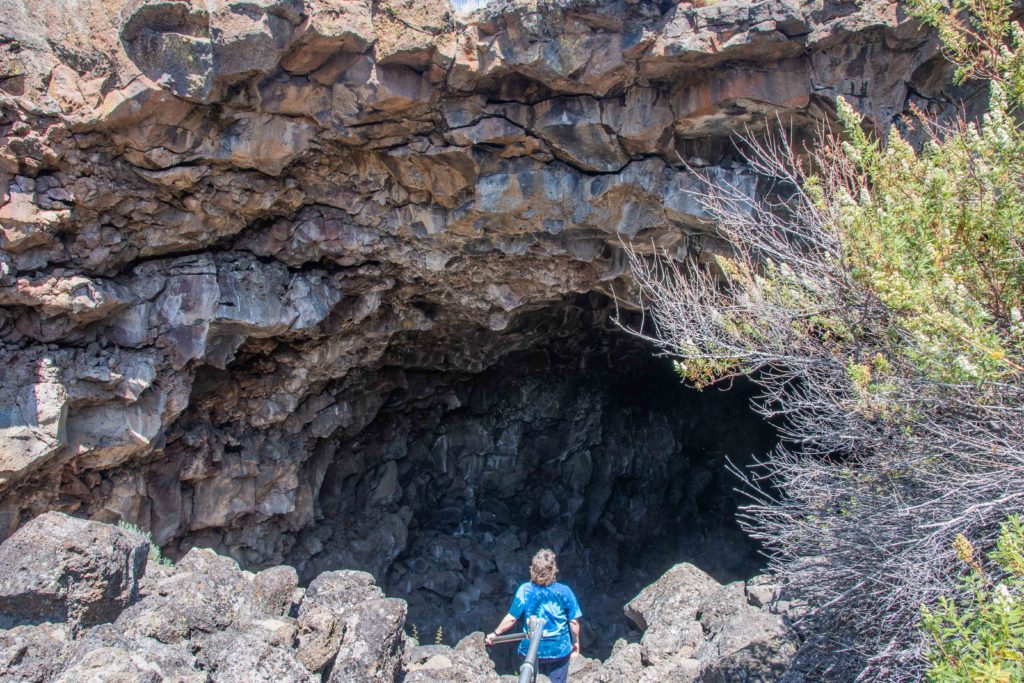
Lava tubes are formed when streams of lava start to cool. The center of the stream stays hot and continues to flow as the outside cools and hardens. The hot lava drains out, leaving a tube-like cave. Multiple eruptions can stack lava tubes on top of one another, creating multi-level caves such as Skull Cave that Jane is entering in the photo above. Skull Cave is a large, multi-level lava tube that is not very long, but is very deep.
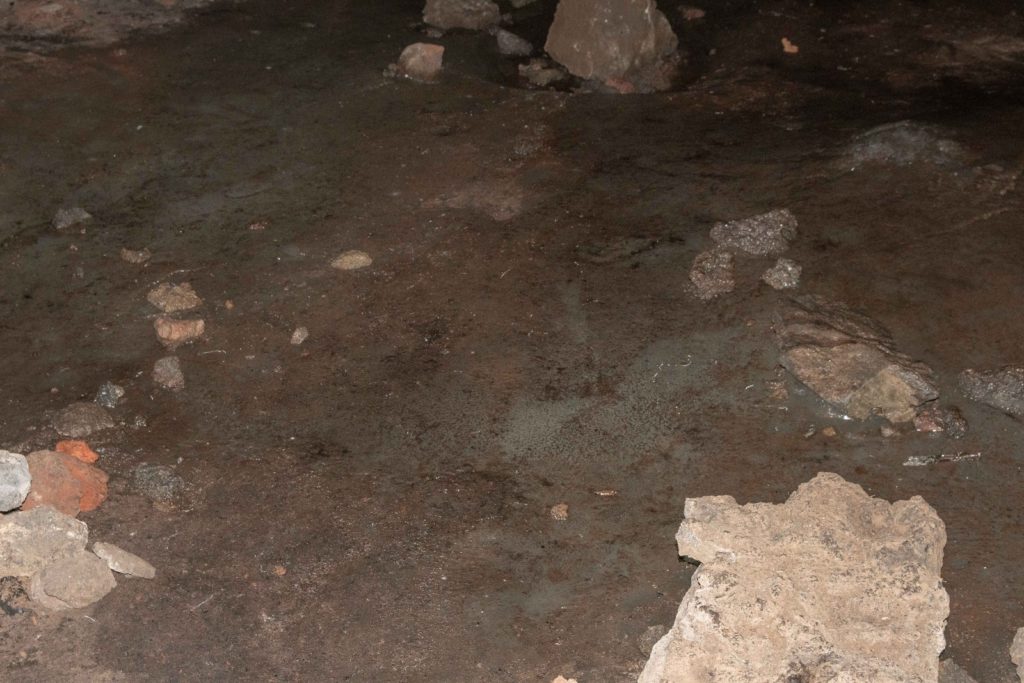
It is so deep that cold air from winter gets trapped in the bottom of the cave where collected rainwater freezes, creating the year-round ice floor, shown above, which is several feet thick.
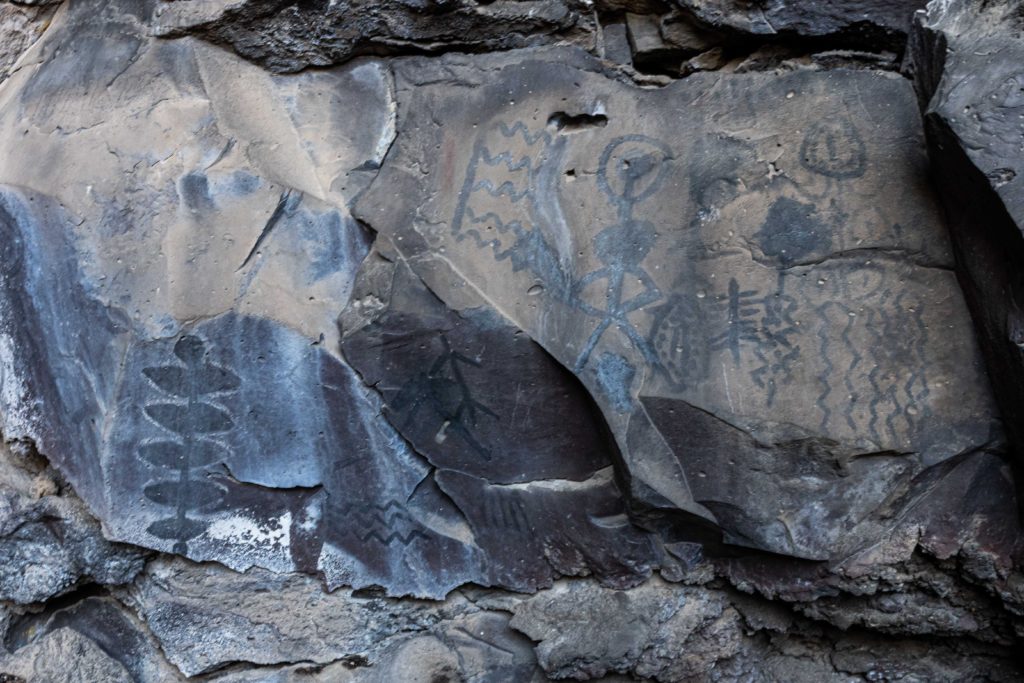
The Modoc and their ancestors lived in this area for about 10,000 years. They called it “the land of burnt-out fires” and their lives followed the rhythms of nature. They left behind numerous pictographs in the lava caves.
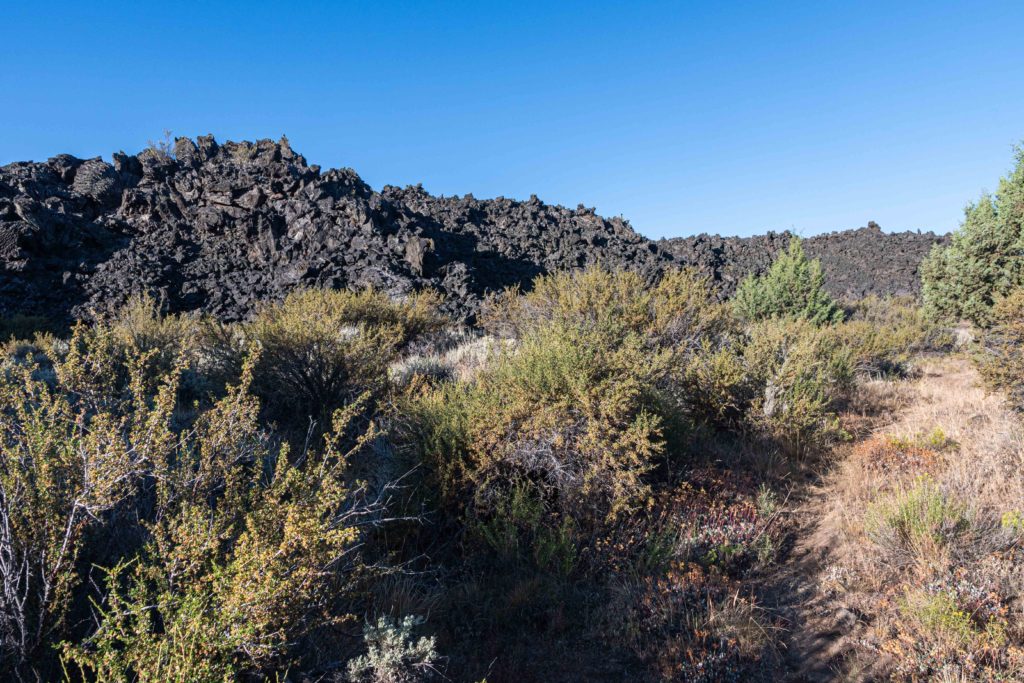
The Callahan Lava flow can be found at the end of a 3.5 mile hike and is massive. What can be seen from the end of the trail is several hundred yards long and about 50 feet high. We have no idea how wide the flow is due to its size and a fence at the end of the trail preventing us from going further.
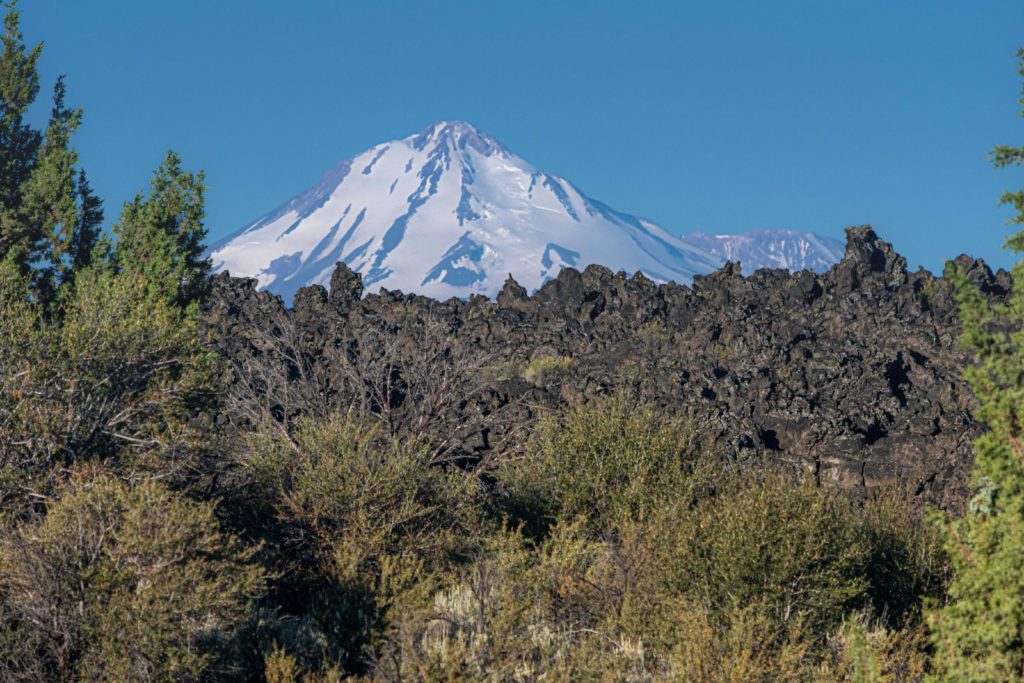
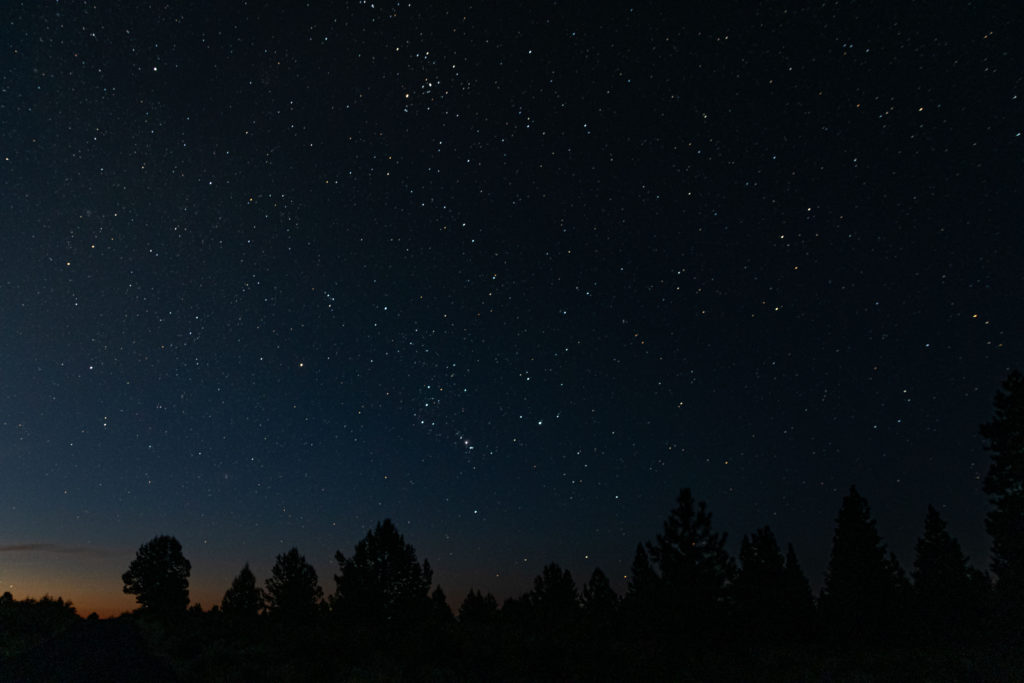
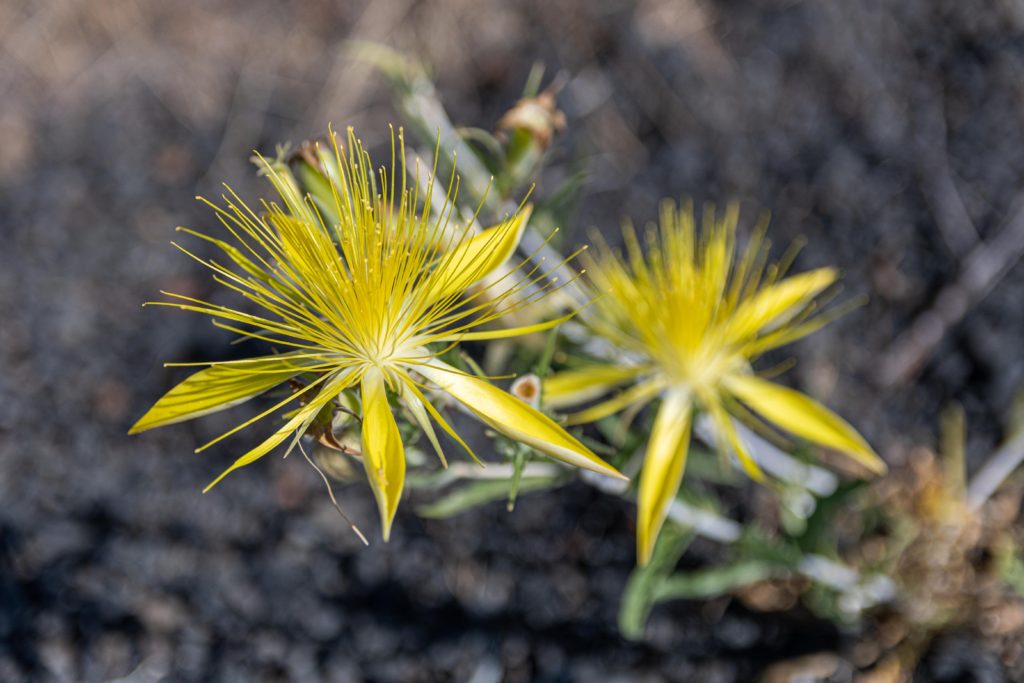

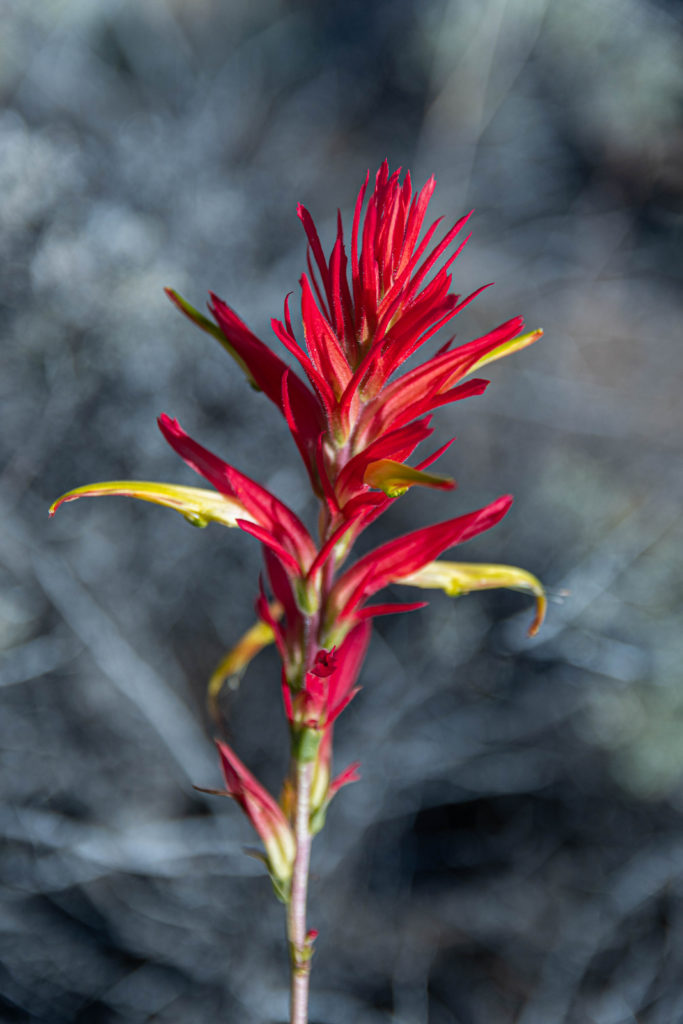
We only stayed at Lava Beds a few days, but we really enjoyed ourselves. This was our first time to enter a cave in a national park without a guide. We traveled maybe half a mile in absolute darkness by ourselves (“Bring your own flashlight”). It is a unique experience. One thing we learned is that our cellphone lights are not nearly as bright as we thought they were. You won’t stumble onto Lava Beds; you need to plan to go there. It is not a very long drive from Crater Lake and lodging can be found less than 50 miles from the park, so if you are in the area it is worth a day or two of exploring. One other note: we have found that generally national monuments are less crowded than national parks and are great to visit in their own right. We’ll be seeing more of them.